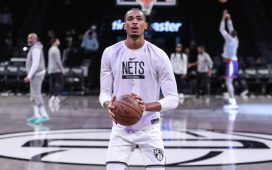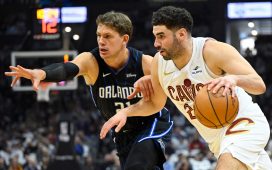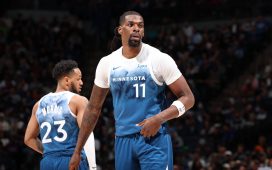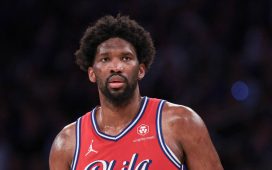The NBA’s new “play-in” tournament is likely here to stay, and with it comes a tectonic shift in the league’s class structure. Where there once was 16 postseason spots guaranteed to teams that win a certain amount during the regular season, there are now 12. Where there once was 14 teams with no kind of taste of the playoffs, there will now be just 10. Where there once was… nothing… there will now be eight teams pitted against each other in single-elimination chaos, likely for the privilege of being first-round cannon fodder. All in all, it’s an expansion of the middle class paired with a contraction of the upper class.
Some teams feel the change more than others. There are the Portland Trail Blazers, which eye a potential change at their head coaching position this summer as they hover uncertainly between the upper and middle classes with their core Damian Lillard-C.J. McCollum pairing finishing its sixth season. The Boston Celtics, hit hard by COVID-19 and the consequences of a deep 2020 playoff run, are also strapped with a kind of existentialism about their franchise that might not exist if not for the new bracket arrangements. For the Washington Wizards, stricken both by the pandemic and the rushed genetic changeup of adding Russell Westbrook to their team, the new middle rung comes as a form of mercy as the Wiz have made a second-half recovery from their disastrous 2020-21 beginning.
In the case of the New Orleans Pelicans, the new class structure is cause for red alert. With Zion Williamson setting new precedent for what a 20-year-old can do in the NBA and Brandon Ingram making last year’s Western Conference All-Star squad, a simple question presses on them: Why aren’t they better? Two and a half games out of the play-in tournament at the moment, they are unlikely to make it in and arguably behind schedule as the clock ticks toward Williamson’s surely historic free agency. After next season, the Pelicans will have to begin the offering-and-negotiating part of their relationship with their young franchise player. Multiplying stress about Williamson’s comfort level in New Orleans is that, when asked about New York City and Madison Square Garden last month, he barely stopped short of saying, “Hoooweee!!”
Late last week, Williamson was declared out indefinitely with a finger injury. Pelicans GM David Griffin called a press conference, during which he performed a bit of righteous indignation about how Zion is officiated. Griffin was both right and wrong: Zion both gets fouled more than referees acknowledge but also fouls more than referees acknowledge. Officiating him is a physics problem not much different from that of building a bridge over the spout of a volcano. He is simply built different, and calling him is the most challenging task the profession has seen since Shaquille O’Neal was around—a point of reference that Griffin touched upon in his fusillade as well.
Think for a minute about everything Griffin is in the crosshairs of, and you’ll have no trouble empathizing with his fervor. Zion is something we haven’t seen in this league before—not unless there is some other lightning-quick version of Moses Malone whom everyone has been hiding from me—and he comes of age as the sport moves the goal posts on success dramatically. The Pelicans are a test case Griffin is managing, in more major ways than one. While finishing 11th in their loaded conference wouldn’t be any different than finishing ninth in it during a previous season, this year that difference has gone from too marginal to care about to potentially franchise-altering.
Because of the slipshod nature of the COVID season in general, the Pelicans, along with every other team, have plausible deniability when it comes to reckoning with how they did during it. Many dismayed fan bases have begun referring to the year as a “fake season.” While utterances of the phrase do come off as sour, partisan grapes, they are also hard to argue against. The returning champion Los Angeles Lakers are, after all, fighting for their lives and will probably need to battle through the single-elimination phase to keep their title defense going. That is truly not normal, and so much of what we are seeing right now has more to do with the ramifications of playing professional sports during coronavirus than it has to do with the new playoff format.
However, there is unquestionably already a taste of the added pressures and benefits of the play-in’s installation. The eight-team play-in zone is all of the following: extra competitive padding, extra competitive pressure, confusing, ephemeral, purgatorial and a new benchmark for ascendancy. It can mean a lot of different things to a lot of different teams. That is the way that middles generally are and how class systems work. How you perceive its impact really depends on your experiences. If you’re the Sacramento Kings, which haven’t whiffed the playoffs in 15 years, even one single-elimination loss could be a shock to the franchise system. If you’re the Lakers? Maybe not so much. For anyone in between, takes on the play-in run a whole wild range between pleasing and squeezing. This offseason, we will begin to see teams design themselves differently as a result of its existence.








